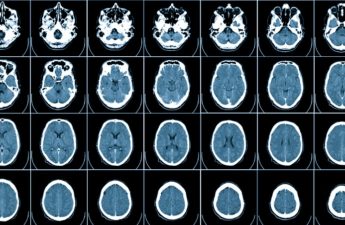
From deficits to a spectrum, thinking around autism has changed. Now there are calls for a ‘profound autism’ diagnosis
Andrew Whitehouse, The University of Western Australia
A heated debate about autism was reignited after the recent publication of an article advocating for use of the term “profound autism”.
This term is not an official part of the autism diagnosis. But the 2021 Lancet Commission on autism – part the journal’s program to gather expertise on pressing global health and science issues – argued the term should refer to people with a diagnosis of autism who have very high support needs, such as 24-hour care for basic needs and safety. The Lancet Commission estimated that around 20% of autistic people meet criteria for “profound autism”.
Now debate centres on whether this term is an appropriate way to highlight the high support needs of a subgroup of autistic people – or whether the term may be a step backwards for community understanding and acceptance.
The autism spectrum
Our understanding of autism has changed dramatically over the past 30 years.
The term “autism” was first introduced into the diagnostic manual in 1980. To receive this diagnosis, children demonstrated significant development difficulties, such as “gross deficits in language development” and “a pervasive lack of responsiveness to other people”.
These difficulties meant people with a diagnosis of autism in the 1980s and 1990s tended to have high support needs – likely 24-hour care.
The 2000s and 2010s saw a major reconceptualisation of autism. Autistic behaviours became understood as present in people who do not have intellectual or significant language difficulties.
This new understanding of autism led to people with a much more diverse range of abilities receiving a diagnosis of autism. The “autism spectrum” was born.
Advocacy and representation
The rethinking of autism to a “spectrum” emerged out of a large body of high-quality research.
Another important catalyst was the extraordinary work of autistic people themselves, who through important advocacy, championed the rights and needs of all autistic people. This advocacy reshaped community views about autism, in particular, that not all autistic people have intellectual disability.
Media portrayals of autism accelerated the shift in community views about autism. TV shows focused on stereotypes of men (it was almost always men) who were intellectually gifted, but had social difficulties. Shaun Murphy in The Good Doctor and Sheldon Cooper from The Big Bang Theory are two examples.
The greater community visibility of autism has been overwhelmingly positive. It has fostered greater acceptance of difference and increased support for a broader range of people. However, like all important societal changes, there have been challenges too.
A key source of debate has been whether broadening the diagnosis of autism has made the diagnostic label no longer entirely fit-for-purpose.
Diagnosis and ‘profound autism’
The purpose of a diagnosis is to help define and identify a health condition or disability. Diagnoses provide understanding about what a condition is, and what it may mean for the person diagnosed. In many cases, a diagnosis can also provide information about the most appropriate clinical management.
A current criticism of the autism diagnosis (officially, “autism spectrum disorder”) is that it is too broadly defined. How can a single diagnostic label that incorporates television’s Dr Cooper as well as people who require around-the-clock care, serve all autistic people?
This was part of the argument the Lancet Commission made when proposing the term “profound autism”. The experts involved claimed that, because people with very high support needs are unable to advocate for themselves, they “are at risk of being marginalised by a focus on more able individuals”.
The term “profound autism”, they argued, would
spur both the clinical and research global communities to prioritise the needs of this vulnerable and underserved group of autistic people.
Strong counter points have been made against the use of the term “profound autism”. These include advocating for alternative ways to describe the different needs of autistic people. For example, using brief descriptions such as “autistic person with intellectual disability”.
A key criticism is that, after the significant gains of the past few decades in recognising the broad spectrum of autistic people, dividing autistic people into two groups using relatively arbitrary criteria would represent a retrograde step.
A discussion of great significance
It is clear there is a large group of people who do not feel well served by the broad nature of the current autism diagnosis. There is a clinical and moral responsibility to acknowledge and value this perspective, and explore it further.
To do so would be entirely consistent with the history of our changing understanding of autism over time.
Whether or not “profound autism” is eventually seen as an appropriate diagnostic term, it is important to acknowledge that this debate touches on deeply personal issues of identity and understanding.
The voice of autistic people must be central in this discussion. The voices of families who care for autistic people must also be valued.
Andrew Whitehouse, Bennett Chair of Autism, Telethon Kids Institute, The University of Western Australia
This article is republished from The Conversation under a Creative Commons license. Read the original article.


